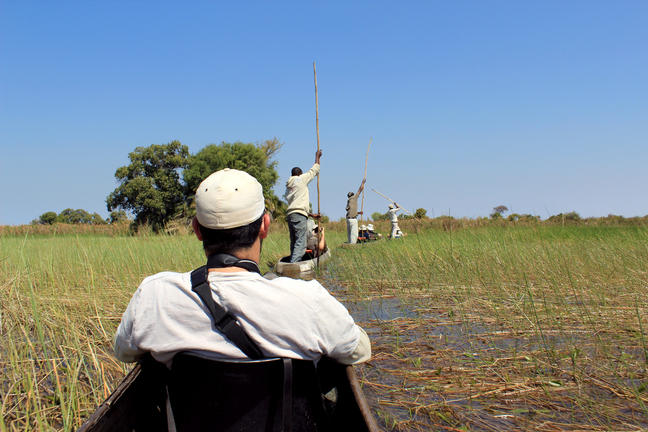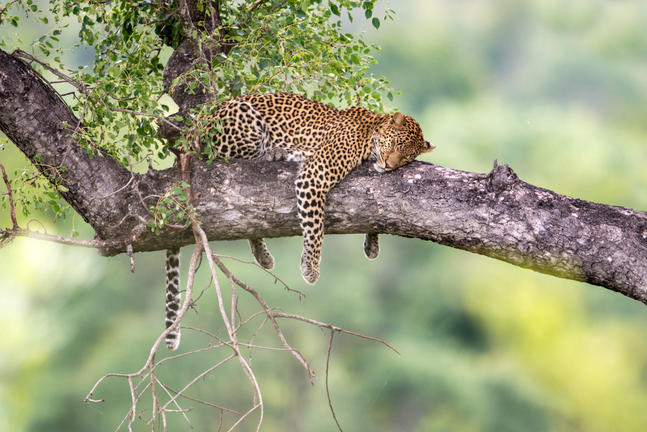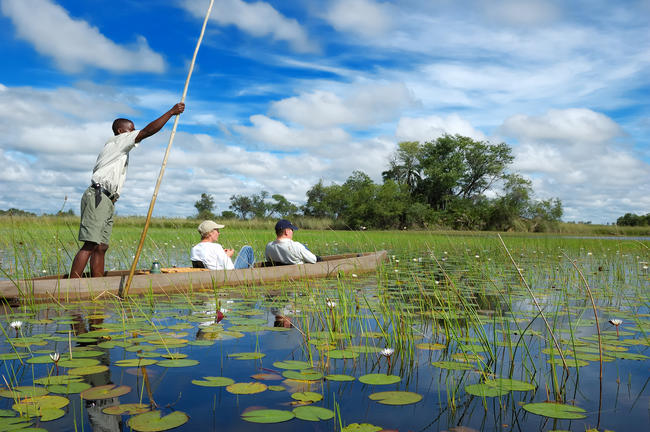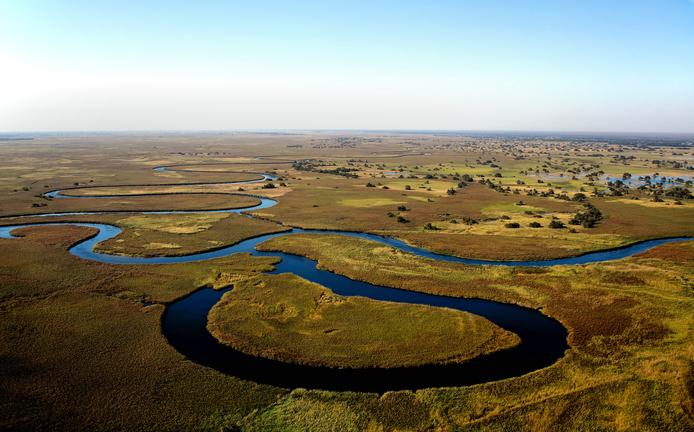Birds rightly favour the delta's abundance of supply and the delta favours an abundance of birds. Distinct riverine and woodland habitats attract a wider diversity of birds and some of the rarities you might see include Pel's fishing owls, narina trogons, white-backed night herons, African skimmers, bat hawks, wood owls and carmine bee-eaters.
Moremi Game Reserve, Chiefs Island the Moremi Tongue cover most of the delta and protect most of the wildlife. Safaris in the Okavango can be entirely on water, entirely on land or a combination of both. July to September is high water season in the delta and this period coincides with the Botswana dry season, making for the best game viewing and the best scenery.
The Formation of the Okavango Delta
A kink in the Kavango River, rising several thousand km away in the Angolan highlands, diverts the river from its natural course towards the Indian Ocean via the Zambezi into the flat sand basin of the Kalahari in Botswana.
Here the river fans out into a palm-shaped network of river scouts that year after year seek a path to the sea. Not to be, as the Kalahari snuffs out their attempts as the water drains into the earth to form the world's largest inland delta spanning 15,000 sq km at its peak.
The Kavango River takes several months to reach its destination and when rivulets begin to fill the the seasonal channels, Botswana's wildlife is on full water rations. Trekking for many days, elephant, buffalo and large herds of plains game leave their rapidly drying hinterlands and head for the communal wetlands in the dry winter months from July to September.
High water is a time of plenty for the herbivores in the delta but their concentrations make for easy pickings. High water is also a time of plenty for the predators, who previously ranged far and wide during the wet season in search of their dispersed quarry.




